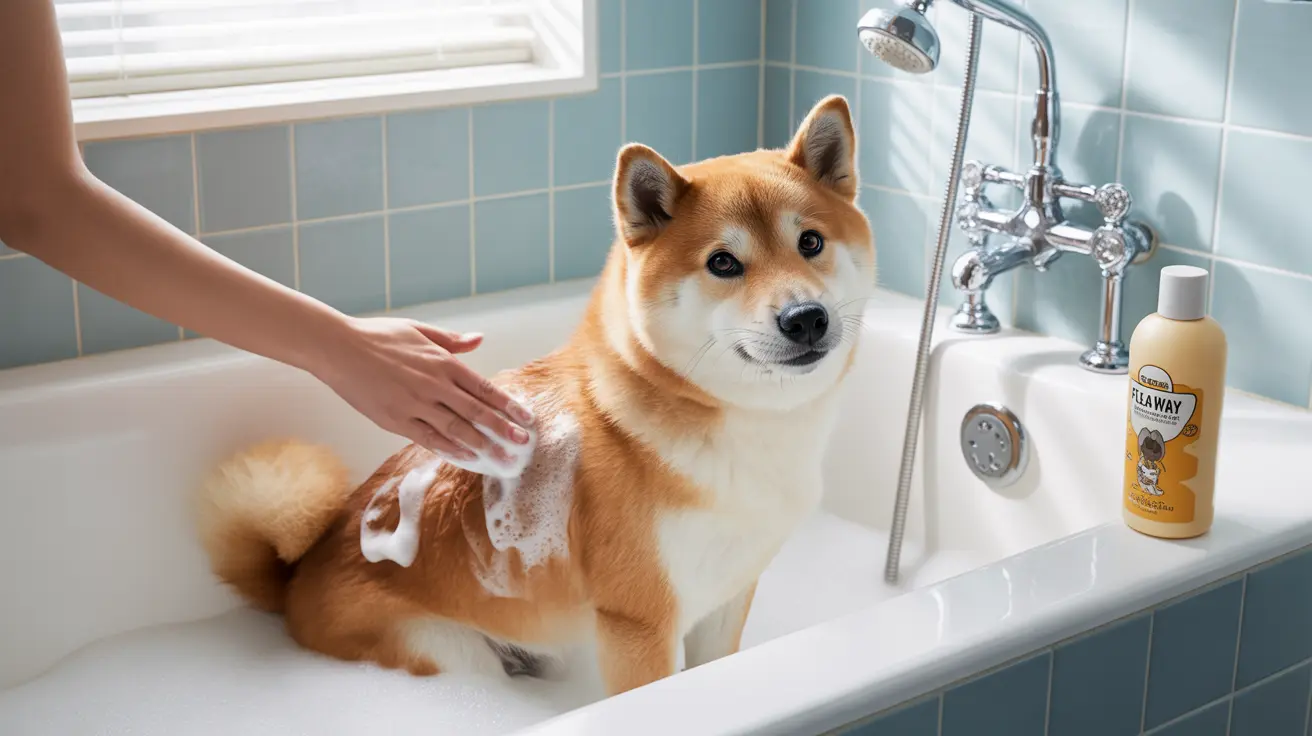If you're battling fleas on your dog, you've probably wondered about the effectiveness of flea shampoo. As a popular first-line defense against these persistent parasites, flea shampoos promise quick relief - but do they actually deliver on that promise? Let's dive into the science behind flea shampoos and explore their true effectiveness in the fight against fleas.
Understanding how flea shampoos work and their place in a comprehensive flea control strategy is crucial for every dog owner. While these products can provide immediate relief, their effectiveness depends on various factors, from proper application to integration with other flea control methods.
How Flea Shampoos Work: Understanding the Basics
Flea shampoos operate through direct contact with fleas, using active ingredients that target the nervous system of these parasites. When properly applied, these products can kill adult fleas present on your dog's coat within minutes of contact.
Most flea shampoos contain either chemical insecticides like pyrethrins and permethrins or natural alternatives such as cedar oil, rosemary, or neem oil. The effectiveness varies significantly between different formulations and ingredients.
The Real Impact of Flea Shampoo Treatment
While flea shampoos can provide immediate relief by killing adult fleas on contact, their effectiveness is typically short-lived. Most products lose their potency within 24 hours after application, making them more suitable for immediate flea control rather than long-term prevention.
Research shows that flea shampoos are most effective when used as part of a broader flea control strategy, rather than as a standalone solution. They excel at providing quick relief for heavily infested pets but should be combined with other preventive measures for optimal results.
Best Practices for Using Flea Shampoo
Proper Application Techniques
To maximize effectiveness, follow these essential steps:
- Wet your dog's entire coat thoroughly
- Apply shampoo starting at the neck and working backward
- Leave the product on for the recommended time (usually 5-10 minutes)
- Rinse completely until water runs clear
- Repeat treatment as directed (typically every 1-2 weeks during active infestations)
Integration with Other Flea Control Methods
For optimal flea control, combine shampoo treatments with:
- Regular vacuuming of your home
- Washing pet bedding in hot water
- Using preventive treatments like spot-ons or oral medications
- Treating your yard and home environment
- Regular monitoring and grooming of your pet
Limitations and Considerations
Understanding the limitations of flea shampoos is crucial for setting realistic expectations:
- Only kills fleas present during bathing
- No residual protection against new fleas
- May require frequent reapplication
- Can be stressful for some dogs
- Not effective against eggs and larvae in the environment
Frequently Asked Questions
How effective is flea shampoo at killing adult fleas and their eggs?
Flea shampoos are highly effective at killing adult fleas present during bathing, with most products achieving a 90-100% kill rate. However, they're less effective against eggs, and their killing power doesn't extend beyond the bath itself.
What are the best natural ingredients for flea shampoos, and how do they compare to chemical-based options?
Natural ingredients like cedar oil, neem oil, and rosemary extract can be effective but generally work more slowly than chemical alternatives. While chemical-based options provide more immediate results, natural ingredients may be gentler on sensitive skin and have fewer potential side effects.
How often should I use flea shampoo to maintain its effectiveness against ongoing infestations?
During active infestations, use flea shampoo every 1-2 weeks. However, more frequent use may irritate your dog's skin. For ongoing prevention, monthly treatments combined with other flea control methods are typically recommended.
Can flea shampoo be used as a standalone method for flea control, or should it be combined with other treatments?
Flea shampoo should not be used as a standalone treatment. For effective flea control, combine it with preventive medications, environmental treatment, and regular cleaning practices to address all stages of the flea life cycle.
What are the potential risks and side effects of using flea shampoo on dogs, especially those with sensitive skin?
Common side effects include skin irritation, dryness, and redness, particularly in dogs with sensitive skin. Some dogs may also experience allergic reactions to certain ingredients. Always perform a patch test first and consult your veterinarian if your dog has known sensitivities.
Conclusion
While flea shampoos can be effective for immediate flea control, they work best as part of a comprehensive flea management strategy. Understanding their limitations and proper use will help you make informed decisions about incorporating them into your pet's flea control routine. Remember to consult with your veterinarian for personalized recommendations based on your dog's specific needs and circumstances.






